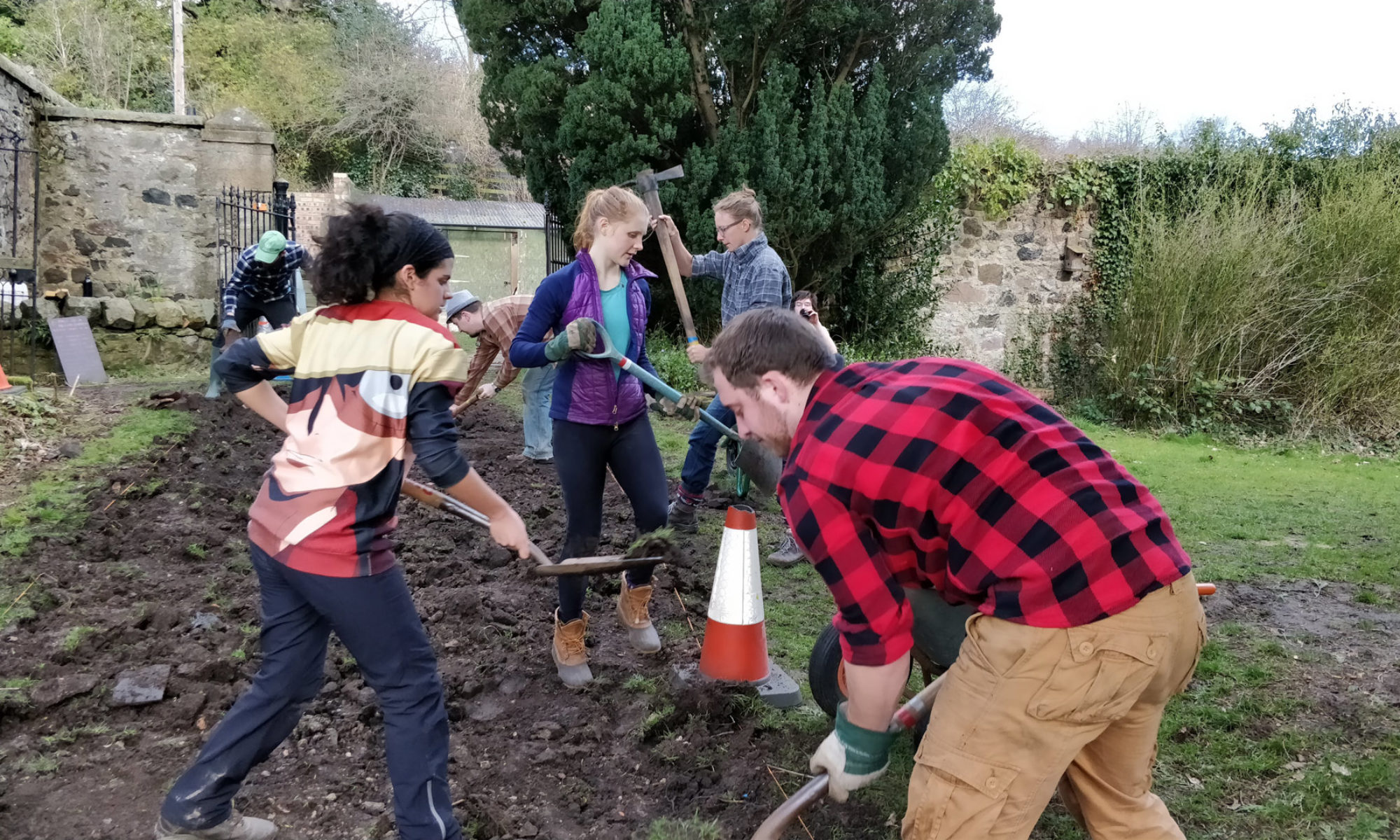The Dirty Weekenders met one more
On a bright and bonny Sunday
To ride for Dalkeith was their aim
They were sure ’t would be a fun day
They rode aboard a Lothian bus
Down the winding roads
And arrived at Dalkeith country park
Carrying their loads
A ranger waited for them there
And lead them through the fields
To a steep and muddy slope
Where steps were to be built
And so, with mattock and with spade
The work began apace
They hammered posts before the planks
To hold them fast in place
Soon once where the slope had been
A row of steps appeared
And now a walk down the hill
Was no longer to be feared
Upon this moment of success
A great luncheon was eaten
Of those famous sandwiches
It’s said cannot be beaten
Then several Dirties brave and bold
Went back up to the field
To play some ratchet screwdriver
On the grass, they kneeled
Twas a very rowdy game
As in the mud they almost fought
When bystanders witnessed from afar
Who knows what they thought?
Refreshed by this lunch and sport
The Dirties sought a whole new foe
Which grew on the bridge crossing the Esk
And there the dirties they did go
Ivy! Such a challenge ’twas
To wrench it from those old stone walls
And then look upwards in dread
Lest on their heads the leaves did fall
Others worked upon the path
As some strong ivy refused defeat
Rope was called for, and the help
Of a dozen dirties’ feet
Clasping to the rope they pulled
And pulled with all their fearsome might
Till the ivy snapped, and fell
Into the river, ’twas a sight!
The day was drawing in by then
A hard day’s work was surely done
They said goodbye to the merry park
And waited by the bus-stop in the sun
The tales of the day were told that eve
Gathered round at the Auld Hoose
Till the next week, then my friends
When the Dirties shall again be loose!
Morgan Powell
Sunday 5th March 2017



